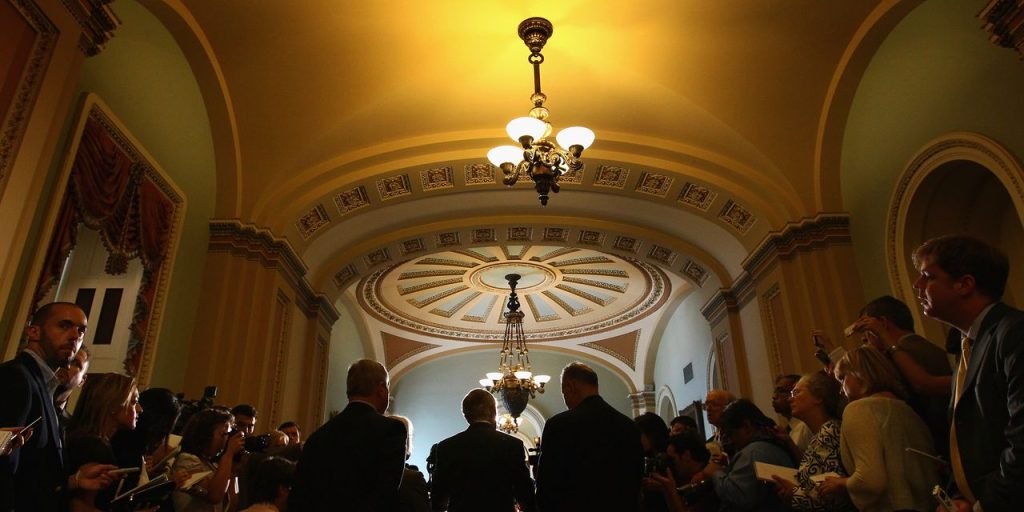Negotiations around the U.S. debt ceiling continue to drag on ahead of a looming deadline, as partisan wrangling potentially endangers the safety of the global financial system.
If this sounds depressingly familiar, that’s because it is: This same situation has played out before. And even if it is resolved at the 11th hour, plenty of investors could still suffer.
From stocks to bonds and beyond, there is little in the financial system that the U.S. debt ceiling doesn’t affect. A lack of a resolution before the June 1 deadline could be catastrophic, likely bringing a stoppage of government benefits to retirees and veterans—and potentially a recession and other woes down the line.
While former President Donald Trump this week said Republicans should let the U.S. default if they don’t get the spending cuts they want, markets are still largely shrugging off this doomsday scenario.
Perhaps that is because the repercussions would be so dire. In other words, investors still appear to trust that even the most obstinate politicians’ brinkmanship wouldn’t dare to fling the economy over that brink. Then there’s the fact that familiarity breeds complacency. Now that the U.S. has stared into the abyss of default in the past, the Treasury Department’s “extraordinary measures” to stave off disaster seem more commonplace.
Economists are turning to past scenarios to game out how this latest standoff could go.
History shows that even if we do finally get an agreement before the June 1 deadline, the showdown will have repercussions and result in slower economic growth, Veneta Dimitrova, senior U.S. economist at Ned Davis Research, wrote on Tuesday.
As many investors will recall, the U.S. came perilously close to default in 2011. Though the world’s largest economy avoided it, Standard & Poor’s still downgraded the U.S. government’s credit, increasing the cost of borrowing for trillions of national debt.
The
S&P 500
sank some 20% from April to October that year—bracketing the August agreement and downgrade—while the dollar index fell and gold jumped, Dimitrova noted.
While this year’s situation is very different from 2011 for a number of reasons, what hasn’t changed is the market’s distaste for uncertainty. That uncertainty, she says, will continue to drag on markets without a long-term solution. The most likely outcome could be a temporary debt ceiling suspension—either for a brief period or until September, when Congress will be debating the budget for the next fiscal year, as lawmakers have done repeatedly in past years.
This quasi solution of kicking the can down the road may just delay the problem. Dimitrova said.
“This would eliminate the risk of default [for now]…although it may push it until later in the year if debt negotiations stall,” she said. “In this case the government faces a double-whammy issue of a default and a government shutdown, if spending runs out.”
Moreover, she warns the debt ceiling standoff could lead to more uncertainty about the U.S.’s economic policy , which also has led to slower economic growth in the past, particularly when the government pulled back on spending. That’s a particularly worrisome parallel, as 2023 has already been marked economic uncertainty with the rapid rise in interest rates.
Ultimately, politicians’ repeated willingness to play with fire around the debt ceiling issue has left markets blasé about the process. Yet the costs are real for Americans and investors, as history shows, and likely will be again.
Corrections & amplifications
Ned Davis Research’s analysis on the debt ceiling was published on Tuesday. A previous version of this article incorrectly stated that the report was from late April.
Write to Teresa Rivas at [email protected]
Read the full article here
